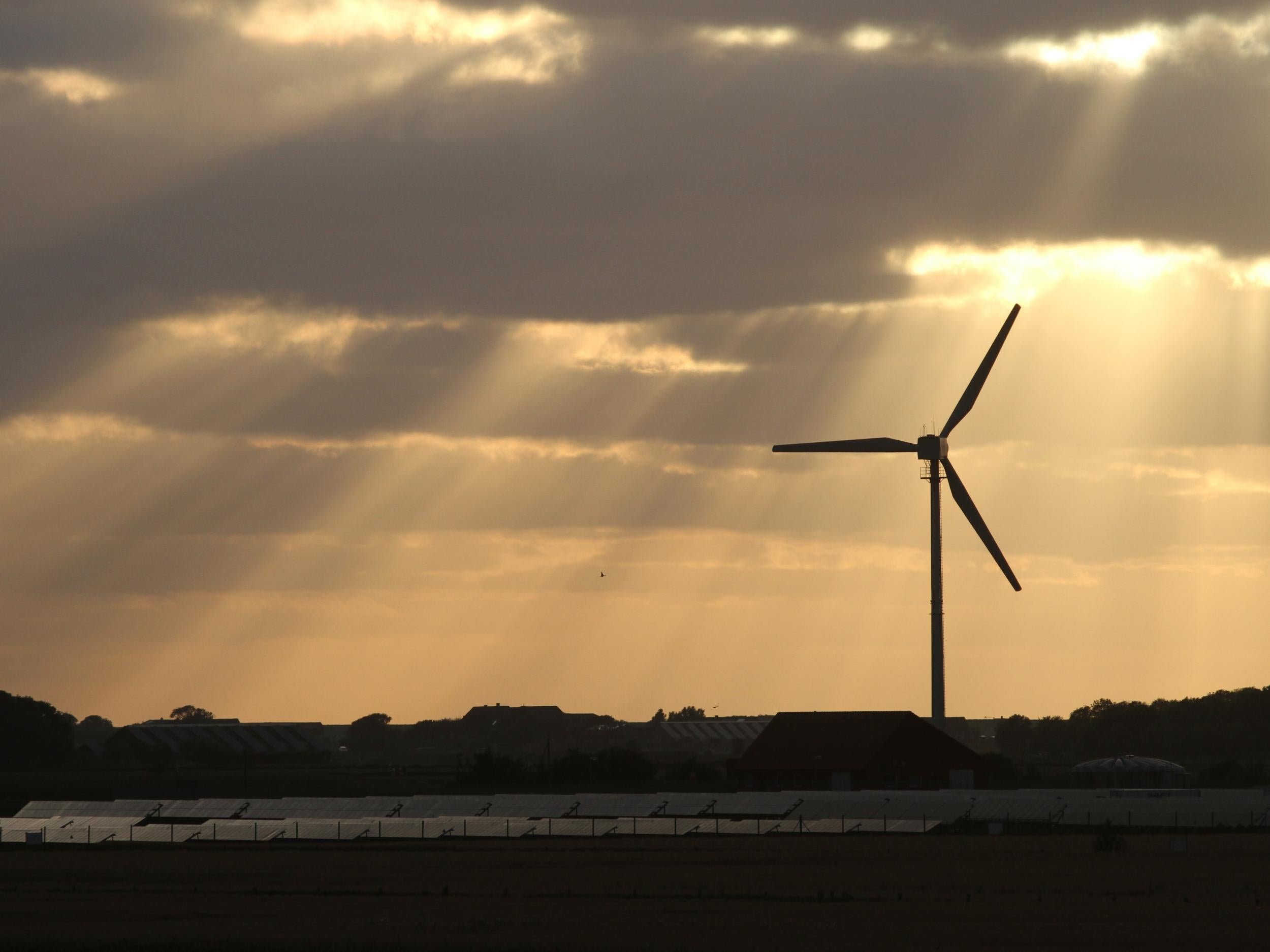Wind and solar overtake nuclear as source of UK electricity for first time ever
‘Plunging price of renewables is allowing low carbon energy to replace coal and gas’

More UK electricity was produced by wind and solar sources last year than by nuclear power stations, for the first time according to the latest government figures.
Renewables’ share of electricity generation shot up to 29 per cent, while nuclear sources accounted for around 21 per cent.
The increase means low carbon energy sources – which include both renewables and nuclear – now account for over half of all electricity generated.
Wind had a particularly good year, giving weight to renewable energy leaders who are calling on the government to end its ban on wind-power subsidies.
“These official figures confirm that it’s been another record-breaking year for wind energy, which generated 15 per cent of the UK’s electricity in 2017,” said Emma Pinchbeck, executive director of trade body RenewableUK.
“The move to a smart, renewables-led energy system is well underway.”
The figures published by the Department for Business, Energy and Industrial Strategy showed renewable energy generation was up nearly a fifth due to increased capacity and higher wind speeds.
Greenhouse gas emissions also fell by 3 per cent across the country, thanks largely to a drop in coal use.
Output from renewable energy sources is now nearly 10 times higher than coal, a notable achievement considering coal’s output was the higher of the two only five years ago.
“The plunging price of renewables is allowing low carbon energy to replace coal and gas,” said Nina Schrank, energy campaigner for Greenpeace UK.
“This meant that at the end of last year over half of our electricity came from low carbon sources, and most of that from wind and solar, overtaking nuclear power.
“These fast-moving trends will continue into the next decade as a new generation of offshore wind turbines come online and demonstrate the technology’s ability to provide the bulk of UK demand.”
Technological improvements in recent years have led to a dramatic fall in the cost of renewable energy.
Previous analysis by the International Renewable Energy Agency has demonstrated that onshore wind farms in particular already have the capacity to outcompete fossil fuels.
Experts have called for an end to the government’s current subsidy ban on new onshore wind farms, which they say is holding back the development of the UK’s energy infrastructure.
“The cost of new offshore wind halved in 2017 and onshore wind is already the cheapest of any new power source in the UK,” said Ms Pinchbeck.
“So it’s vital that new onshore wind should be allowed to compete in the market for the sake of consumers.”
Though many environmentalists and scientists see nuclear as a vital component in a green energy system, plans by the government to invest in new nuclear infrastructure have been met with criticism.
Specifically, campaigners have taken issue with the investment in new nuclear facilities instead of large scale wind and solar projects.
“These figures show the government should capitalise on our global lead in this area and stop wasting time and money propping up nuclear power, a failing and increasingly obsolete technology,” said Ms Pinchbeck.
Join our commenting forum
Join thought-provoking conversations, follow other Independent readers and see their replies
Comments
Bookmark popover
Removed from bookmarks